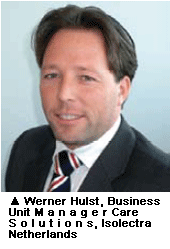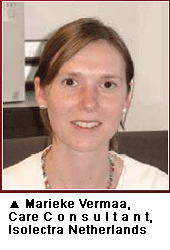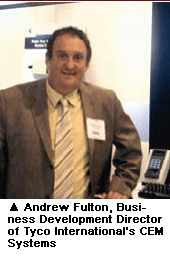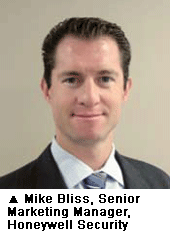Health care facilities range from large hospitals to clinics, all to serve patients needing medical attention. Granting patients access, while keeping threats out, forms the delicate balancing act for health care security.
Health care facilities range from large hospitals to clinics, all to serve patients needing medical attention. Granting patients access, while keeping threats out, forms the delicate balancing act for health care security.
Visits to health care facilities are inevitable, as individuals make trips in and out of them from birth to death. With so many patients at hospitals, clinics and long-term care institutions, health care forms a significant security market.
As health care facilities provide rapid and convenient access to medical care, they also need to guard valuable equipment and medical supplies. Security equipment must account for medical technology, making sure lives are not negatively affected.
Threats
While hospitals and other health facilities are havens for healing, emotions run high, ranging from jubilant new parents to bereaved family members. Depending on the situation, hospitals constantly face danger.
"Health care is challenged with many obstacles and threats, which vary depending on  demographics and facility," said Evelyn Meserve, Executive Director of the International Association for Health Care Security and Safety. "The three most commonly mentioned by our membership are visitor and access control, workplace violence, and forensic patients."
demographics and facility," said Evelyn Meserve, Executive Director of the International Association for Health Care Security and Safety. "The three most commonly mentioned by our membership are visitor and access control, workplace violence, and forensic patients."
For workplace violence, physical attacks against medical staff are a threat. "Health care personnel carry monitoring systems to protect them against violent patients or, for example, a patient's family member who is unhappy with the treatment given to a patient," said Werner Hulst, Business Unit Manager Care Solutions, and Marieke Vermaa, Care Consultant from Isolectra Netherlands. Metal detectors are also being installed near emergency rooms to detect for guns and knives.
The term “forensic patient” refers to patients under law enforcement custody who need medical treatment. “These patients are usually in handcuffs and possibly more,” Meserve said. “Their captivity is always a concern, as they see the hospital as an opportunity to break away and escape. These patients are often violent and dangerous.”
Infant abduction poses a threat as well, with RFID solutions to track mothers and babies. “This involves babies being tagged on the ankle, with mothers tagged on the wrist,” said Andrew Fulton, Business Development Director of CEM Systems. “In the event of a baby exiting an exit point with unidentified mother, an emergency alarm occurs.”
babies. “This involves babies being tagged on the ankle, with mothers tagged on the wrist,” said Andrew Fulton, Business Development Director of CEM Systems. “In the event of a baby exiting an exit point with unidentified mother, an emergency alarm occurs.”
Site-Specific Concerns
Some situations health care facilities deal with cannot be found anywhere else. For one, emergency rooms are uniquely chaotic places. "Emergency rooms typically involve a combination of patients, highly compensated staff, security personnel, police and loosely regulated visitors," said Mike Bliss, Honeywell Senior Marketing Manager. "Mitigating the risks posed by the constant interaction of large numbers of people requires significant training, processes, design and security systems."
Hospitals must face contagions. "Anyone in the confines of a hospital risks exposure to blood-borne and airborne pathogens," Bliss said. "Hospitals must carefully train staff on proper procedures and equipment use to protect everyone in the building and surrounding community. Access control systems can help facilitate and enforce these processes and procedures throughout the organization."
 Technology Solutions
Technology Solutions
With risks in mind, an array of technologies keeps patients and medical staff safe. To bring a wide range of systems together, integration plays a major role in how security is implemented.
This is seen in the convergence of physical and logical security, which protect patient data. “Protecting patient confidentiality and minimizing the risk of situations that might damage a facility's reputation requires a seamless connection between logical and physical security,” Bliss said.
Access Control
With the constant ebb and flow of patients, medical staff and visitors, access control is paramount in health care.
“Access control and identification systems are the most common security systems in health care,” Meserve said. “The technology varies depending on the patient  population in many facilities.”
population in many facilities.”
Multipurpose cards add another layer to access control. “In terms of access control applications, we've seen smart card technology used for managing access to scrub dispensing, food service payment, parking access, employee time management and attendance,” Bliss said.
Video
Advances in video technology have led to some exciting purpose built solutions for health care. Remote monitoring, boosted by affordable cameras and stable networks, has turned "telemedicine" a reality.
"Telehealth is the delivery of health-related services and information via telecommunication technologies," Vermaa said. "Telehealth delivery could be as simple as two health professionals discussing a case over the telephone, or as sophisticated as using videoconferencing to connect a patient to his caregiver."
Telemedicine is already deployed in Afghanistan, where there is one doctor for every 5,300 people, according to a Cisco Security press release. Cisco and its local telecommunications partner Roshan link rural patients to physicians in Karachi, Pakistan and Kabul, Afghanistan.
Home Automation
The trend for remote monitoring has emerged in alarms. While cameras are acceptable for "seeing" the doctor on a monitor, some elderly or infirm people in their homes dislike the idea of cameras watching their every move. Instead of deploying cameras, alarms can perform the same functions in a less intrusive way.
Sensors provide useful information in a timely fashion. "When a sensor is activated it sends a radio signal to a central home unit, which then automatically calls a 24-hour monitoring center," Vermaa said. "These systems allow for the individual to feel secure in their homes, knowing that help is only minutes away."
Challenges
As health care adopt s new technologies to nurture patients, security also adapts for the future. Among the challenges for health care security are meeting market demands, integration of facilities and services, and continuous changes in legislation and standards, Meserve said.
Security technology no longer has to be separate from hospital operations. The lines have been blurred, with remote monitoring enabling virtual doctor visits and smart cards becoming more than contactless keys. As security develops, it will become part of the cure for health care solutions.